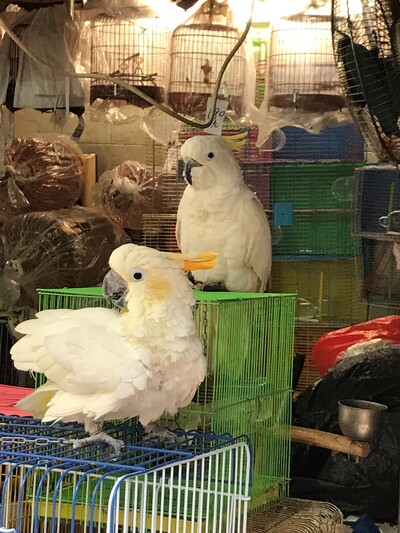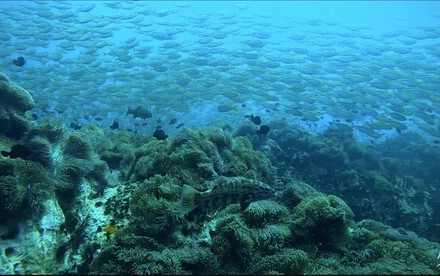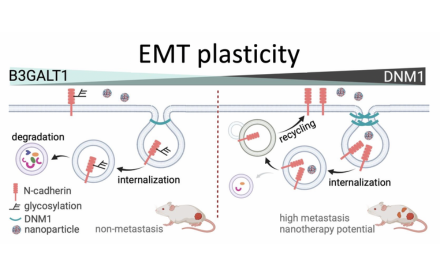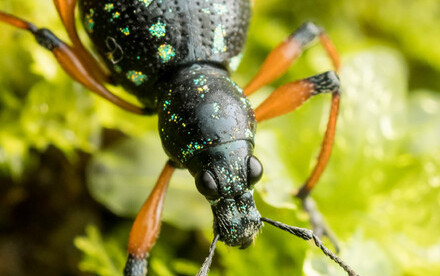27 May 2021
Translational Research Series: Reduction of illegal global wildlife trade through novel conservation forensics research
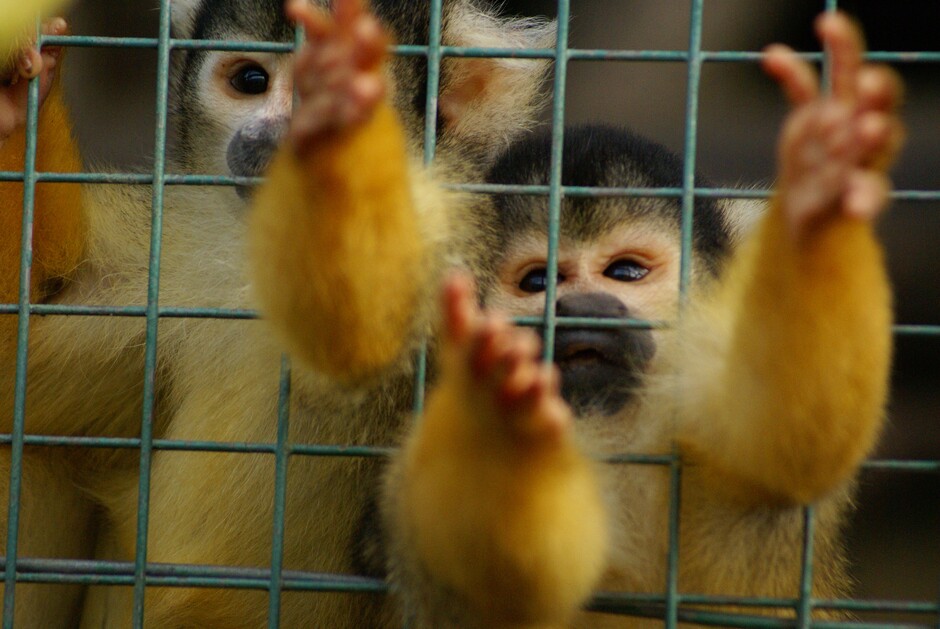
Squirrel monkeys on sale – the legal trade in live primates is very lucrative. Photo courtesy of Michelle Garforth VENTER
Dr Caroline DINGLE
Director of Conservation Forensics Lab
Hong Kong has long been a central hub in international wildlife trade networks, be it legal or illegal trade. This is due in part to the high volume of trade transactions through its major port, along with its prime location as a transit hub between origin and destination countries. Every year, substantial worth of documented trade passes through Hong Kong’s borders. While much wildlife trade is legal, the quantity of trade provides the opportunity to launder illegally sourced and traded species and products.
The Research Area for Ecology and Biodiversity’s research on wildlife trade has involved decades of multidisciplinary work. Building upon HKU’s history of monitoring illegal trade and the impacts on wild populations, the Conservation Forensics Lab was established in 2016 to investigate the wildlife trade. Having developed a range of molecular and isotopic forensics and data-analysis tools for countering wildlife crime, research undertaken at the Lab has provided data used as evidence to increase enforcement of national and international laws that protect endangered species and support illegal wildlife trade reduction.
Data-based methods for tracing illegal evidence
Multiple laboratory and data-based methods are used to describe patterns, quantify the scale and identify species involved in the trade. By using genetic and biogeochemical approaches, species and their geographic origins can be identified, revealing whether a species is being traded legally or not. Biogeochemical studies could help determine whether an animal was captive-bred or wild-caught, a piece of evidence key to trace whether a species is being sold legally or not. Results from these studies have led to successful prosecutions as well as higher levels of protection for species impacted by trade.
Conservation actions stemming from these research projects have resulted in increased protection of turtles, pangolins, and fish under the Convention on International Trade in Endangered Species of Wild Fauna and Flora (CITES) and via the International Union for Conservation of Nature (IUCN).
Newly developed forensics techniques
Looking forward, Director of the Lab Dr Caroline DINGLE expected the newly developed forensics techniques would continue to provide evidence to support successful prosecution. “We are currently developing methods to apply stable isotope analysis (SIA) to determine whether an animal is captive or wild-caught. SIA has been used widely in ecology, but it is relatively new that this tool is being applied to wildlife forensics. While more work needs to be done to verify that this is a robust forensic tool, it is so far very promising.“
In collaboration with HKU Faculty of Law, the Lab also contributes to the Species Victim Impact Statements (SVIS) Initiative. The aim of this Initiative is to develop statements that provide information on the impacts of wildlife trade on wild populations of species threatened by trade. These statements are made available to the prosecution and judicial teams involved in wildlife crime case.
“We are working to develop a database of reference samples for genetic and isotopic work. This database would be a crucial reference tool for local authorities seeking to comprehensively monitor wildlife trade in Hong Kong and assist in the international goal to more effectively prevent fraudulent trade in protected species,” Dingle added.
Highlights of successful cases
Dr David BAKER
Action: gathered the first evidence of the illegal trading of European eelsinto Asia and Hong Kong.
Impact: genetically identified glass eels (juveniles of the endangered European eel) intercepted by Hong Kong Customs, leading to a successful prosecution.
Dr Timothy BONEBRAKE
Action: conducted a social network analysis of data collected from a range of online sources on Chinese seizures of pangolins.
Impacts: 1) supported the increased protection of pangolins under the CITES and IUCN. 2) These studies were influential in contributing to the successful proposals for the up-listing and increased protection of the Chinese pangolins from Appendix II to I.
Professor David DUDGEON
Action: quantified the illegal turtle trade in markets.
Impact: his work was influential in the successful proposal and subsequent increased protection of the big-headed turtle (family Platysternidae) from Appendix II to I.
 |  |
USD billions of wildlife and wildlife products are traded internationally without species-level traceability. Photo courtesy of Astrid ANDERSSON. | Photo of painted wood turtle (Rhinoclemmys pulcherrima). Photo courtesy of Astrid ANDERSSON. |
 |
|
Researchers of Conservation Forensics Lab: (from the right) Director: Dr Caroline DINGLE Founding members: Dr Timothy BONEBRAKE, Dr David BAKER and Professor David DUDGEON Other member: Dr Hannah MUMBY | Yellow-crested Cockatoos (Cacatua sulphurea) for sale in Hong Kong's bird market. Photo courtesy of Astrid ANDERSSON. |


